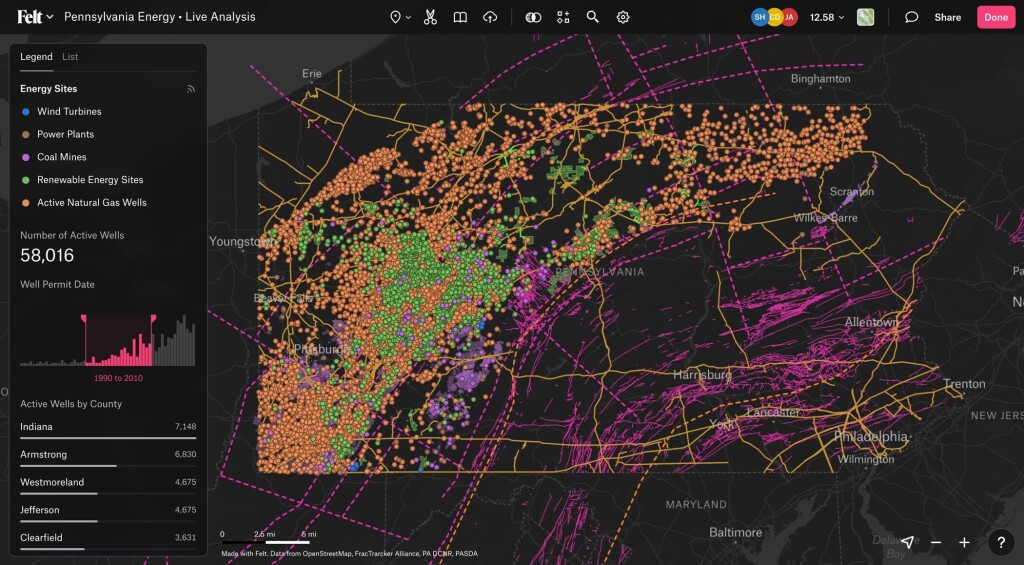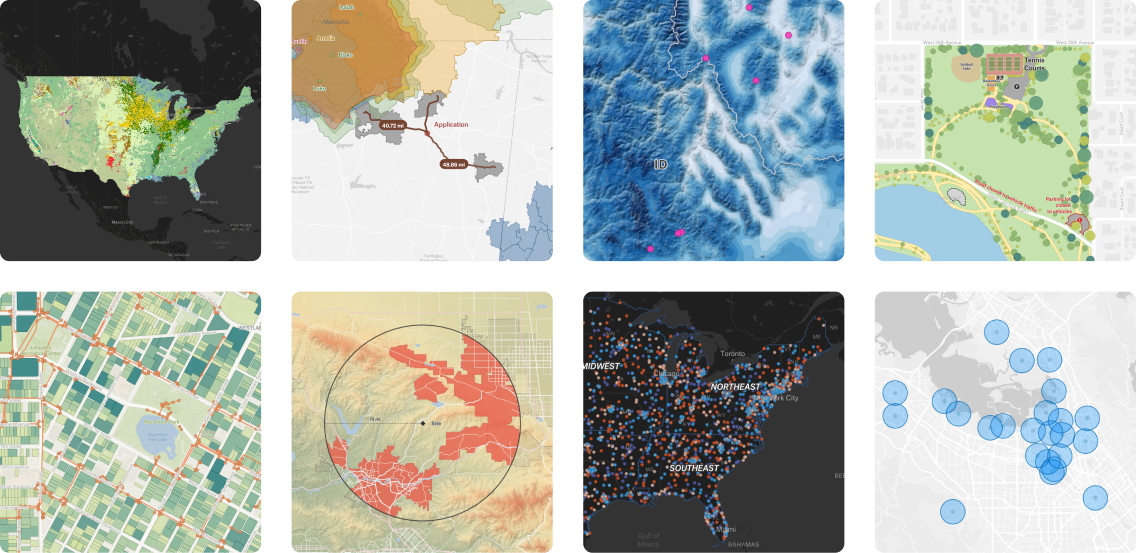Oakland, CA–July 16, 2024: Felt, the world’s first collaborative mapping tool, today launched Felt 3.0 with new features and native database integrations to unlock powerful Geographic Information Systems (GIS) capabilities for the enterprise. Designed to make data more accessible and actionable for stakeholders across an entire organization, Felt 3.0 enables teams with modern GIS tooling so they can visualize, analyze, and present the insights and map data that matter most to their operations—regardless of their industry or expertise.
Felt is renowned for combining the familiarity of browser-based collaboration tools with professional mapping workflows, making it easier for professionals to extract and share meaningful insights. The company’s 2.0 release in November 2023 introduced a new UI and spatial analysis tools as the first step to enable teams without GIS expertise to gather insights from geospatial data—from recruiting, analytics, management, and more. Now, Felt 3.0 expands on that mission by enabling teams to connect their database directly to Felt and build interactive components and dashboards that are specific to their team’s workflow.
"I invested in Felt because I’ve seen firsthand with Notion how important collaboration is for organizations," said Akshay Kothari, Co-Founder of Notion. “Now with Felt 3.0, the team has truly unlocked the ability for any team to collaborate and make decisions with their geospatial data. It’s no small feat to turn massive datasets into enterprise-level visualizations and analytics that non-experts can interact with. We’re excited to see how organizations take advantage of their newfound GIS superpowers.”
Introducing Felt 3.0 for Enterprise
The foundation for expanding GIS use cases to the wider organization is enabling teams to work with geospatial data that’s both connected to a source of truth and up-to-date. With Felt 3.0, companies can now directly connect Postgres/PostGIS and Snowflake databases to Felt and keep the data fresh with automated live data updates. Support for other third-party data sources, including Databricks, Amazon’s S3 and Redshift, Google’s BigQuery, and SpatioTemporal Asset Catalogs (STAC), will be available soon.
Felt 3.0’s new components and dashboards help teams make sense of geospatial data and answer questions specific to their operations, like “How is sales coverage across our territories?” or “Which areas have the highest wildfire risk?” Without any training or time required to deploy, teams can build customized dashboards with five types of components to visualize and measure map data. These features eliminate the need for business intelligence tools that aren't built to filter or visualize geospatial data and difficult, desktop-based GIS tools that lack collaboration.

Customers like Sharetown, the County of Santa Barbara, and Terrabotics are leveraging Felt 3.0’s capabilities to build geospatial apps specialized to their team’s use case and workflow:
- Logistics company Sharetown isolates geospatial and sales data in Felt to monitor field rep performance and identify coverage gaps across territories.
- The County of Santa Barbara’s Public Works department lays routes in Felt to map road closures and communicate them to first responders and the general public.
- The analytics team at Terrabotics gathers oil and gas intelligence to monitor industrial gas emissions across the planet, and turns them into an interactive Felt map for clients.
“Managing return orders across the U.S. with thousands of field reps is an operational feat with complex logistics challenges. The amount of data we had caused constant crashes or would take our sales reps five minutes to load in our old software. It was so easy with Felt,” said Michelle Denna, VP of Sales at Sharetown. “The map allows our team to be more efficient, and has become a critical part of our sales and recruiting processes.”
Developers can also use Felt’s new API to dramatically cut down engineering time for custom geospatial app implementations. The API makes it easy to create and style elements and listen to map updates via webhooks, while providing a Python SDK so professionals can continue to work in their preferred tools.
“Teams shouldn’t have to rely on a single expert or be stuck in a static map, PDF, or complex tool, especially when modern app experiences can help them get answers faster. Felt 3.0 equips entire teams with GIS capabilities, and provides more ways to get data out of silos and into the hands of stakeholders, clients, and constituents,” said Felt CEO and co-founder, Sam Hashemi. “Putting geospatial apps and dashboards into the hands of professionals is a major unlock across organizations, and we’re proud to be bringing this technology to the masses.”
To try Felt 3.0 today, visit: https://felt.com/blog/gis-databases-and-geospatial-dashboard-visualizations/
About Felt
Felt’s founders have a proven track record of innovation. CEO Sam Hashemi's early career included designing interfaces for astronauts, scientists, judges, and other folks who were using technology from the 70s. His first company Remix scaled up to 400+ cities in 17 countries and was one of the largest software acquisitions in 2021. His co-founder Can Duruk, CTO, was an early engineer at Uber, Digg, Upthere and runs one of the most popular technology newsletters on the internet.






